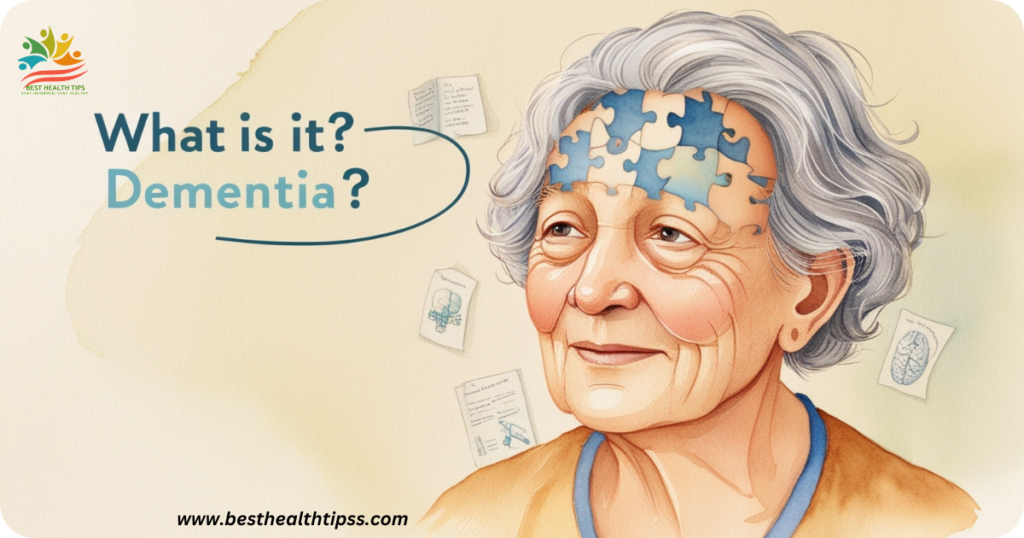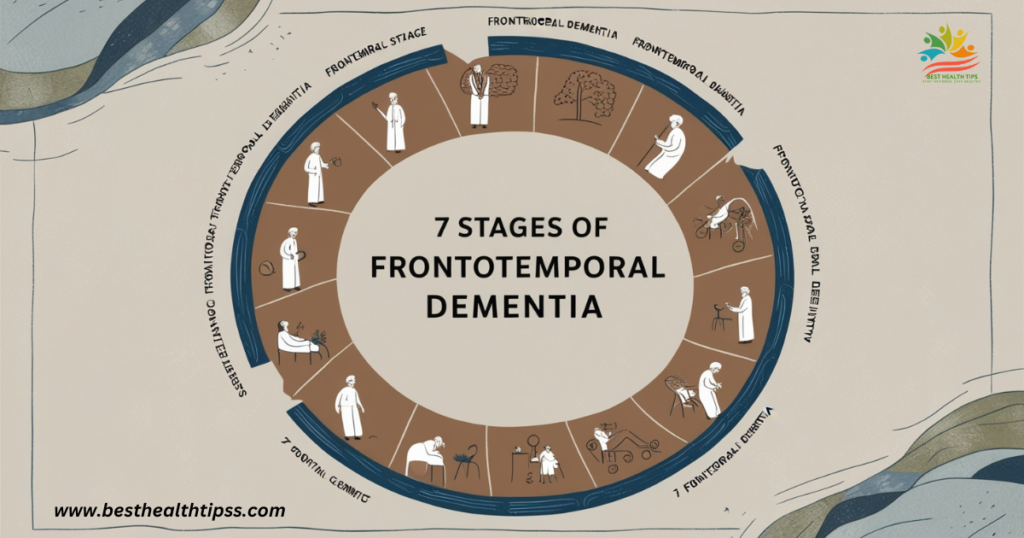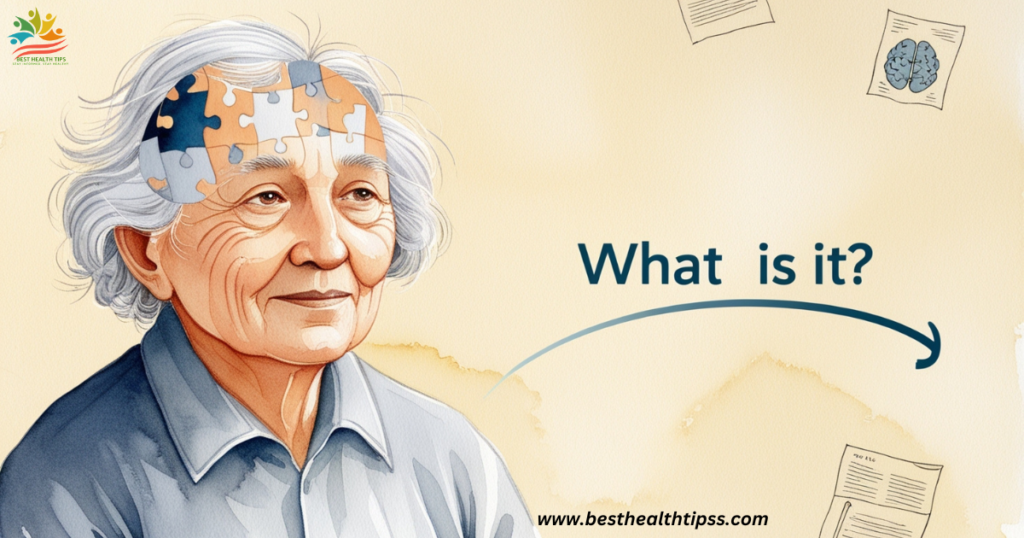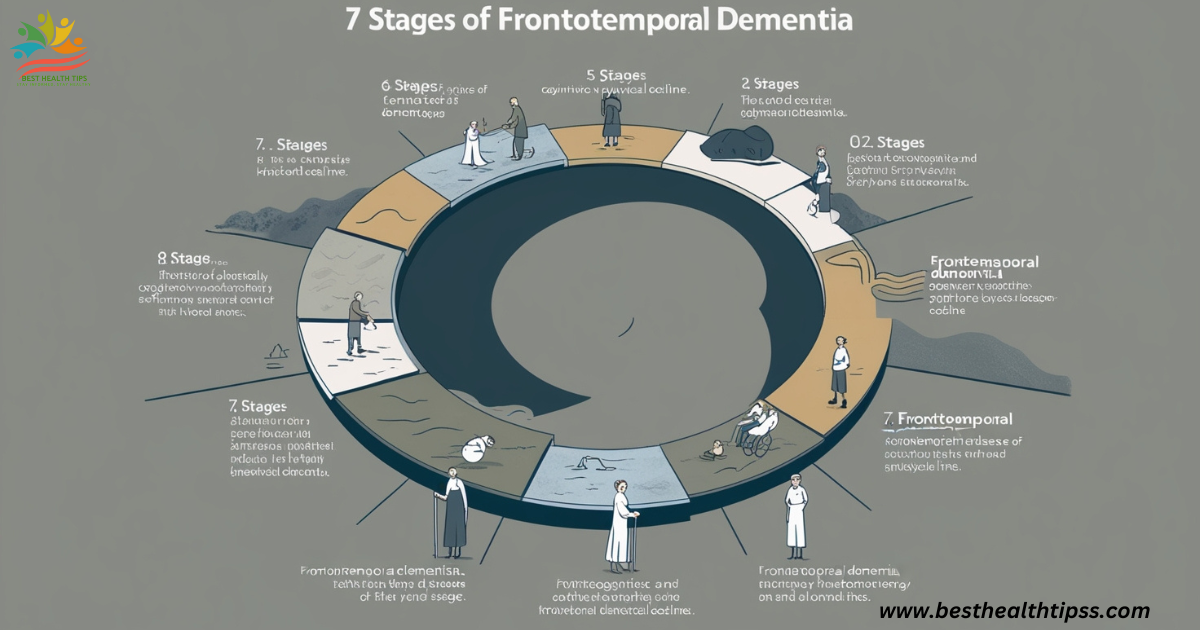Introduction
How FTD is different from Alzheimer’s diseases Frontotemporal dementia, a rather awkwardly complex neurodegenerative disease, impairs the brain in several ways as it makes a person move, speak, and act awkwardly. It tends to affect the frontal and temporal lobes of the brain, making its symptoms different and more challenging to handle with respect to most symptoms observed in most cases of Alzheimer’s disease. The categories of FTD include primary progressive aphasia PPA; diseases affecting movement; and behavioral variant frontotemporal dementia bvFTD. Knowing the 7 phases of FTD can help you understand how your disease is going to progress and the changes you are going to make with your symptoms.
Frontotemporal Dementia: What is it?

FTD represents a family of dementia, which includes those forms in which parts of the brain’s frontal and temporal lobes degenerate gradually. This involves the areas of the brain associated with behavior, making choices, speech, and movement. Although the cause of FTD is unknown, it is thought to be somehow linked to the deposition of certain proteins disrupting the normal functioning of the brain. It generally happens between 40 and 60 years of age and affects around 10-20 percent of dementia patients. The 7 Stages of ftd describe the whole continuum of the full range of early and milder symptoms across the late phases of greater physical and mental disability.
Figuring out these stages helps caregivers and loved ones understand how the disease progresses, so they can help and support the person at the right time at each stage.
The Seven Stages of FTD
To help you spot signs as they get worse, knowing the 7 stages of FTD dementia can be helpful. Each stage shows a worsening of the disability, which makes things much harder for both the person with FTD and the people who care for them.
Stage 1: There is no impairment
In the early stages, people with FTD dementia may not show any obvious signs. This time can go on for years before any obvious signs show up. This stage is often missed because there are no changes in thinking or behavior.
Stage 2: Impairment that is very mild
At this point, you might start to notice some mild signs. Family members may notice small changes in behavior, like having a little less drive or trouble finding words. These symptoms are usually thought to be normal parts of getting older, though, and most people can handle things on their own.
Stage 3: Mild decline
People may start to show early signs of cognitive and behavioral decline in Stage 3 (Mild decline). Symptoms like poor judgment, slight language problems, or acting without thinking might become clear. People may also have trouble communicating properly, which could affect their social relationships.

Stage 4: Moderate Impairment
At this level, the symptoms get worse and can be seen by family and friends. Some important changes are:
1.Having trouble understanding or speaking the language.
2.More lack of interest or apathy in personal ties.
3.Impulsive or rude actions in social situations.
4.Daily tasks like managing funds or making appointments can be hard.
When someone is in Stage 4, they may need more organized help and may need help with safe, everyday tasks. Families and guardians should keep an eye on safety and make sure that care is always the same.

Stage 5: moderately serious impairment
In the fifth stage, moderately serious impairment, cognitive and behavioral symptoms get worse as FTD dementia gets worse. At this time, most people lose the ability to do things on their own and need daily help. Among the symptoms are severe speaking problems that make it hard to speak and understand what others are saying. People who have severe personality or behavior changes may act aggressively or obsessively. More disorientation, which makes it hard to be in regular places.
Stage 6: Severe Impairment
People with FTD dementia are very dependent on caregivers at this stage. It is very hard to remember things, think clearly, and speak clearly. Severe apathy, lack of motivation, and not being able to understand complicated conversations are all common signs. Also, your mobility may start to get worse, making it necessary to get help with simple tasks. People’s physical health gets worse, and they often need full-time care to do everyday things like eating, dressing, and keeping themselves clean.
Stage 7: Very Bad Impairment
When someone has the last stage of FTD dementia, they need help with everything in their daily life. They might not be able to talk, walk, or know their family members. Staying in bed usually has a great impact on physical health and predisposes individuals to many illnesses. Now, often at this stage, other health issues often accompany FTD dementia, and healthcare providers will prioritize palliative care to ensure the patient is comfortable and lives well.
Changes in the way we understand and treat FTD from year to year
| 1980 | The first serious consideration of FTD as a unique type of dementia occurred |
| 1990 | diagnostic criteria were developed for bvFTD and PPA |
| 2000 | genetic associations: changes in certain genes-for example, MAPT. |
| 2010 | . During the 2010s, advanced neuroimaging techniques could be used to visualize how early to intervene |
| 2020 | Biomarkers for early detection and possible treatments are still being studied. |
Frequently Asked Questions About the 7 Stages of FTD

Does FTD run in families?
Genes can cause FTD, and families pass down between 10 and 30 percent of cases that are connected to certain gene changes.
What makes FTD different from Alzheimer’s?
Alzheimer’s mostly affects memory, while FTD mostly affects behavior and speaking. Another thing is that FTD usually starts earlier, between the ages of 40 and 60.
Is it possible to treat FTD?
So far, researchers have not identified a cure for FTD. But the therapy tries to deal with the symptoms, offer support, and make life better.
How long each part of FTD lasts?
Each one of them lasts for a different number of years. For some, the decline may take longer, while for others, it may happen faster.
Can FTD be stopped?
Currently, there is no known intervention to stop FTD. But a healthy life, mental stimulation, and absence of risk to heart diseases may all be all positives towards healthy function of the brain.
Conclusion
Caregivers, families, and health care workers must become aware of the 7 stages of FTD dementia. Each stage presents its problems and requires solving with patience and kindness. Even though FTD is still technically a progressive disease and has no cure, success in diagnosis, treatment. And research gives everyone hope for better management and new therapies in the near future. For people affected by FTD dementia, knowing the steps can help them plan in a better way to help and care for their loved ones.
Read More about Health News and Research in our website Best Health Tips


